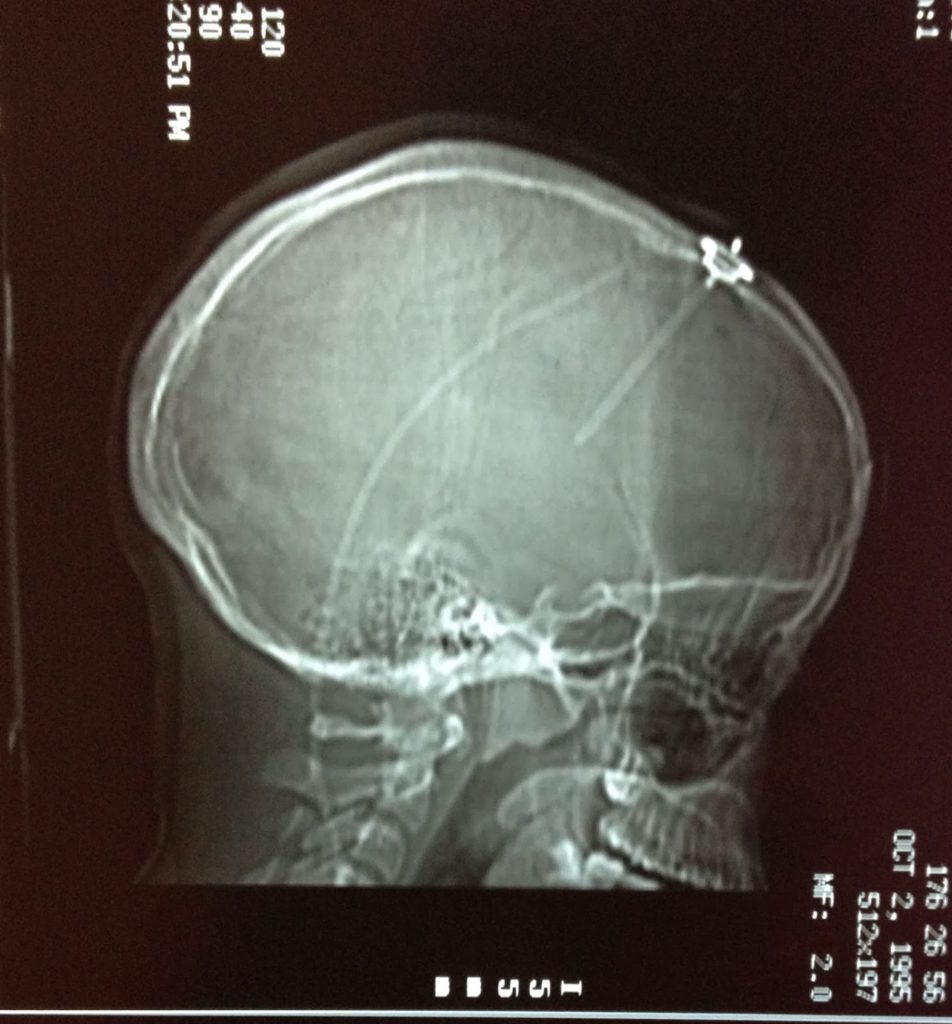 |
| CT Scan of my shunt in 1995. |
On February 16, 2014 it will be three years since my last shunt revision on February 16, 2011. Earlier this week I received the 38 page copy of my medical records from the hospital which I wanted to keep for my reference. Reading the doctor’s notes regarding the complexity of my shunt revision was interesting. This is the shorted version:
Beginning: The patient presented with a few days of headaches. the patient had some nausea and vomiting. The patient came in the ER and a CT scan showed that ventricular system was enlarged compared to the previous rapid MRI done in 2010. The patient also had a shunt series which showed the shunt was intact. the patient had a shunt tap done and there was poor proximal flow seen. CSF was sent to the lab for routine glucose, cell count and gram stain culture. The patient was preoped and taken to the Operating Room for VP shunt revision.
Middle: We planned to use two scalp incisions, one on the right and one to the left. We also planned to use the previous abdominal incision if necessary. We used a scapel blade to open the two incisions. The Bovie cautery was used to dissect down to the skull. The tissue was quite adherent and scarred. (from my previous revision surgeries) We therefore diagnosed a proximal shunt obstruction. We connected a new medium pressure valve to the distal catheter. The proximal ventricular catheter was removed. The new ventricular catheter was cut to the appropriate length so it could be connected to the new valve. It was secured with a 2-0 silk tie.
End: ‘We took a 25 guage needle and inserted it into the reservoir of the valve. We had good proximal flow. we then irrigated again with antibiotic irrigation. We closed the the two scalp incisions with a 2-0 Vicryl suture. We closed the skin with a 3-0 Moncryle. We placed antibiotic ointment and Tefla over the incisions. We placed Tegaderm over the Tefla. The patient was exuberated and taken to the PACU in stable condition.
It’s no wonder the throbbing pain I feel upon returning the hospital is so intense, since the incision made goes directly down to the bone. I had already known this before just based on the feeling of it, but to read about it is entirely different.